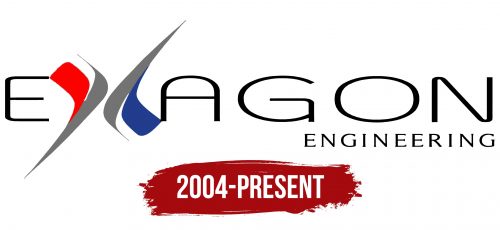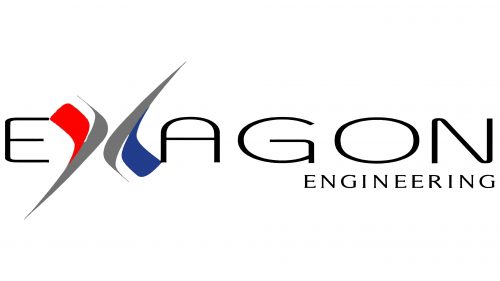The Exagon Engineering logo resembles a burst of energy shooting towards the stars at incredible speed. The design emphasizes the team’s racing characteristics, and the refined elements give the emblem a dynamic and sporty look.
Exagon Engineering: Brand overview
Founded in 2004 by Luc Marchetti, Exagon Engineering has made Magny-Cours, France, its operational center. The racing team is under the leadership of Katie Muller, a former racing driver and older sister of Ivan Muller, a renowned road racer. The team debuted in the FIA World Touring Car Championship (WTCC) 2007. In that season, the entire championship was SEAT Leon, piloted by Pierre-Yves Cortals, and Anthony Beltoise held a couple of race weekends in the team.
The following year, Cortals returned to the wheel of the Exagon but was forced to leave the team in 2009 due to losing his main sponsorship. That same year, the team switched attention to Moroccan driver Mehdi Bennani, who joined the team from round five in Marrakech, again in a SEAT Leon.
In addition to the WTCC, Exagon Engineering has competed in other forms of racing, including rallycross, sports car events, and icy track events. Despite being on a smaller scale than other teams, Exagon has been a constant presence in the WTCC paddock since it first took to the track in 2007.
Meaning and History
What is Exagon Engineering?
It is a French company specializing in motorsports and automotive engineering. It is known for its involvement in the design, construction, and management of racing cars, especially in the electric car sport. The company is recognized for its work on the Andros Trophy ice racing series and for developing the Furtive-eGT, an electric sports car. The company specializes in advanced engineering solutions.
2004 – today
The Exagon Engineering logo represents a car racing team with a strong motorsport identity, featuring symbols of speed and power. The central element is the letter “X,” formed by dynamic gray, red, and blue stripes. These colors symbolize agility, excitement, and precision, key qualities in auto racing.
The rest of the letters in “EXAGON” are thin and black, with elongated shapes and smooth curves resembling stylized race tracks. The letter “O” stands out, mirroring the circular nature of a racing circuit, adding to the logo’s sense of speed and fluidity.
“Engineering” is written in small, capital serif letters in the lower right corner. This font adds a touch of tradition and seriousness, contrasting with the contemporary and flowing primary text. The serif font conveys professionalism and technical expertise, highlighting the engineering skills behind the team.
The emblem’s gray stripes signify precision and technological sophistication, reflecting the detail-oriented nature of high-performance race car design. Red stripes evoke excitement and passion, while blue stripes represent agility and control, essential traits for top performance on the track.
The “X” is the focal point, symbolizing the name “Exagon” and the crossroads of innovation and performance. The interplay of colors within the “X” creates a sense of motion and power, emphasizing the team’s commitment to speed and engineering excellence.
The smooth, elongated curves of the letters convey continuous movement, like a race car navigating a track. This enhances the logo’s visual appeal and reflects the team’s dedication to innovation in racing.
The placement of “Engineering” adds depth, symbolizing the team’s solid foundation of expertise and tradition. This combination of modern and traditional elements creates a balanced visual identity that resonates with both contemporary and classic aspects of motorsport.





